It feels curiously liberating to know that culinary classics like falafel can be made not just with chickpeas or fava beans, but in fact with most legumes. After all, most traditional dishes have always come from a place of necessity and availability, making use of what’s around but applying culinary wisdom that can be found in other parts of the world too. So why not bring the falafel to the UK and use British grown green peas instead?
To take it a step further, instead of serving the falafel with tahini (essentially a sesame seed butter) I am using sunflower seed butter and apple cider vinegar for a rich albeit slightly (and strangely) sweet sauce. I have not yet come across commercially available sunflower seeds that were grown in the UK, possibly due to the machinery that is needed to hull the seeds. But what joy awaits behind the possibility alone… to now only use sunflower seeds, but all edible seeds that grow in this climate and let them diversify how we approach staple foods.
If you haven’t made falafel before, read through this recipe first, where I explain what steps led me to the crispiest and fluffiest falafel at home.
serves 4
Ingredients
Falafel
-
200g dried green peas
-
1 onion
-
5 garlic cloves
-
1 green chilli
-
50g coriander
-
50g parsley
-
1 tsp ground cumin
-
1 tsp ground coriander
-
1l vegetable oil for frying
Sunflower Seed Sauce
-
50g sunflower seed butter
-
2 tbsp lemon juice
-
1/2 garlic clove
Method
To make the falafel, soak the dried peas overnight in 3x the amount of water.
The next day, drain the peas and add them to the bowl of a food processor. Pulse them into a coarse pea flour, making sure not to grind them too finely, which would make the falafel rather dense. Tip out the peas and set aside.
Peel and roughly chop the onion and garlic. Cut the chilli in half lengthways, remove the seeds and chop the rest into large pieces. Twist off the leafy bit of the coriander and parsley bunches and discard the stalks. Add the onions, garlic, chilli, coriander, parsley and 1 tsp salt to the bowl of a food processor and pulse until fine.
Add the chopped aromatics to the peas along with the spices and use your hands to mix everything together. Then refrigerate for at least 15 minutes.
Heat the vegetable oil to around 170°C. If you don’t have a thermometer, you can later use the first falafel to test the heat. In the meantime, with wet hands shape the mixture into around 16 falafel balls (30g each).
To test the temperature of the oil only add one ball. It should turn golden within 2 minutes. If it takes longer, wait for the oil to become a bit hotter and test with another ball.
Once the oil is hot fry 4-6 balls at a time for 4 minutes until they are crispy and dark golden. Make sure not to overcrowd the pan or they might fall apart.
Place a few paper towels on a cooling rack. Once the falafel are cooked, place them on the paper towels to let any excess oil run off. Continue with the rest until all the balls are fried.
In the meantime, make a quick sunflower seed sauce by mixing the sunflower seed butter and apple cider vinegar with 2 tbsp of water and 1/3 tsp salt. Mix it together until smooth and keep adding water until you can drizzle the sauce from a spoon. Dunk the falafel into the sauce and enjoy.
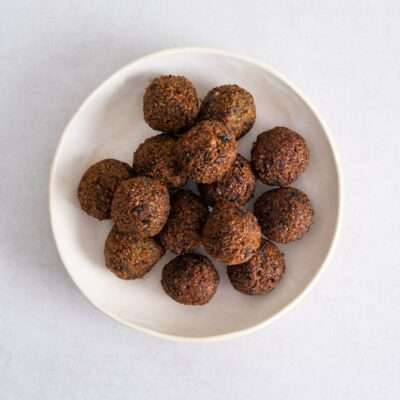
Green Pea Falafel
Ingredients
Falafel
- 200 g dried green peas
- 1 onion
- 5 garlic cloves
- 1 green chilli
- 50 g coriander
- 50 g parsley
- 1 tsp ground cumin
- 1 tsp ground coriander
- 1 l vegetable oil for frying
Sunflower Seed Sauce
- 50 g sunflower seed butter
- 2 tbsp lemon juice
- 1/2 garlic clove
Instructions
- To make the falafel, soak the dried peas overnight in 3x the amount of water.
- The next day, drain the peas and add them to the bowl of a food processor. Pulse them into a coarse pea flour, making sure not to grind them too finely, which would make the falafel rather dense. Tip out the peas and set aside.
- Peel and roughly chop the onion and garlic. Cut the chilli in half lengthways, remove the seeds and chop the rest into large pieces. Twist off the leafy bit of the coriander and parsley bunches and discard the stalks. Add the onions, garlic, chilli, coriander, parsley and 1 tsp salt to the bowl of a food processor and pulse until fine.
- Add the chopped aromatics to the peas along with the spices and use your hands to mix everything together. Then refrigerate for at least 15 minutes.
- Heat the vegetable oil to around 170°C. If you don’t have a thermometer, you can later use the first falafel to test the heat. In the meantime, with wet hands shape the mixture into around 16 falafel balls (30g each).To test the temperature of the oil only add one ball. It should turn golden within 2 minutes. If it takes longer, wait for the oil to become a bit hotter and test with another ball.Once the oil is hot fry 4-6 balls at a time for 4 minutes until they are crispy and dark golden. Make sure not to overcrowd the pan or they might fall apart.
- Place a few paper towels on a cooling rack. Once the falafel are cooked, place them on the paper towels to let any excess oil run off. Continue with the rest until all the balls are fried.
- In the meantime, make a quick sunflower seed sauce by mixing the sunflower seed butter and apple cider vinegar with 2 tbsp of water and 1/3 tsp salt. Mix it together until smooth and keep adding water until you can drizzle the sauce from a spoon. Dunk the falafel into the sauce and enjoy.



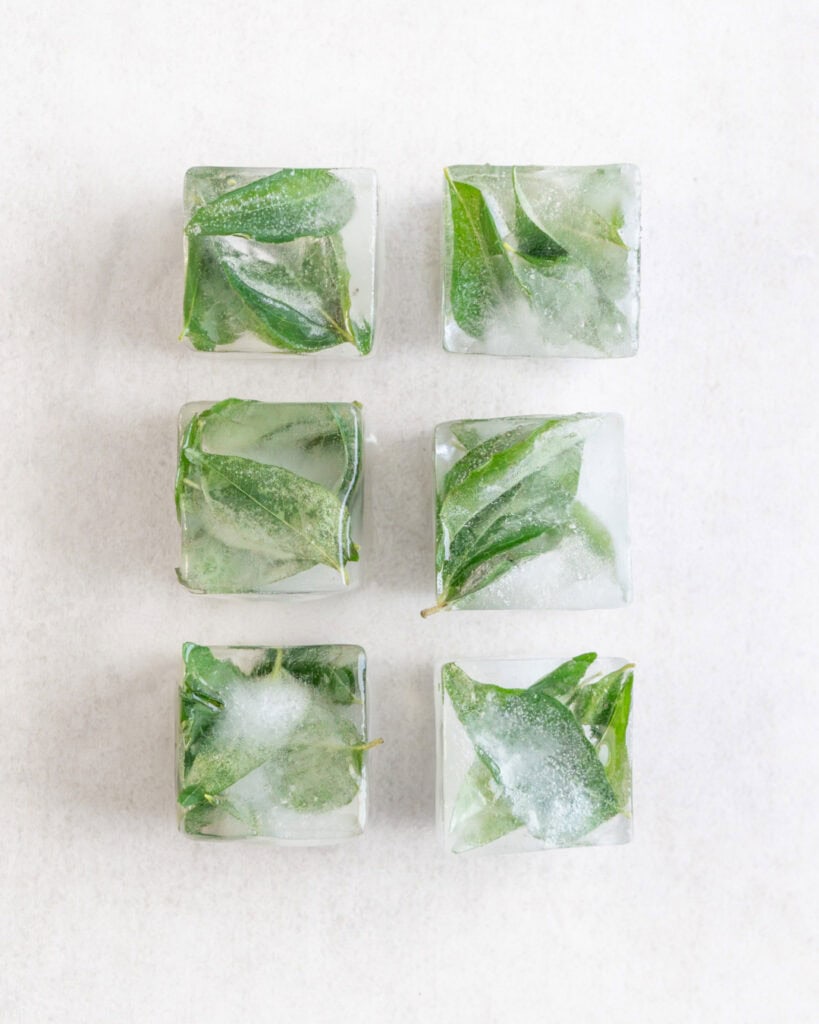

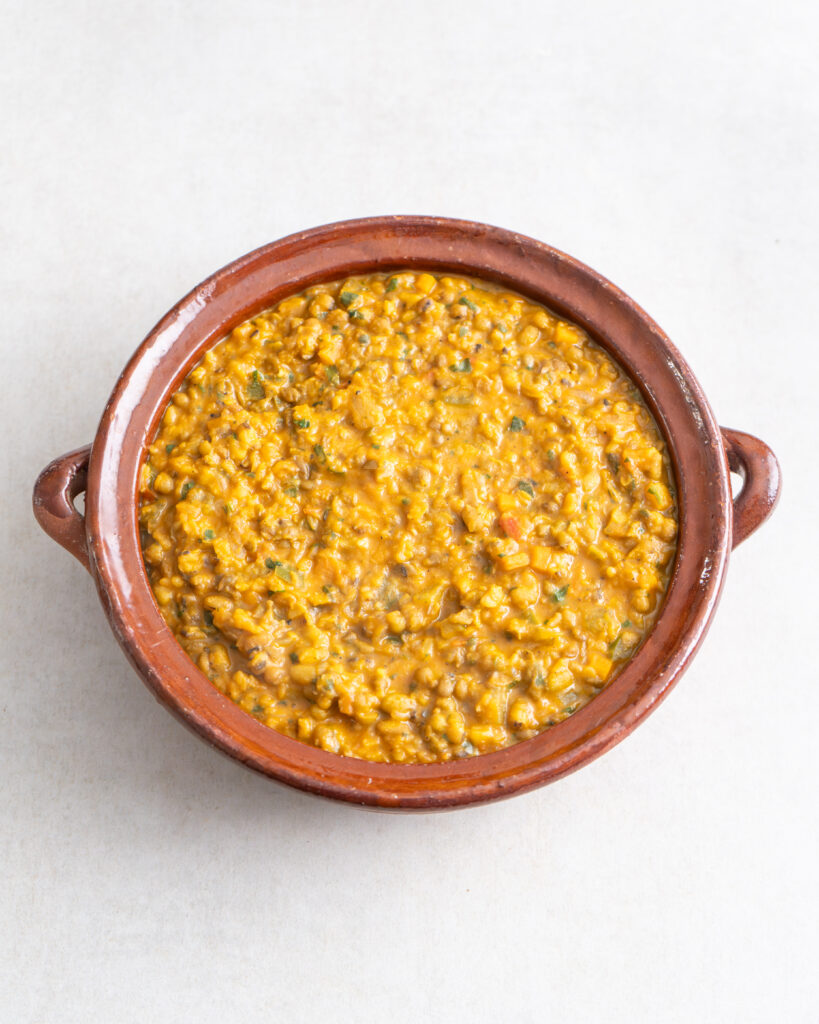

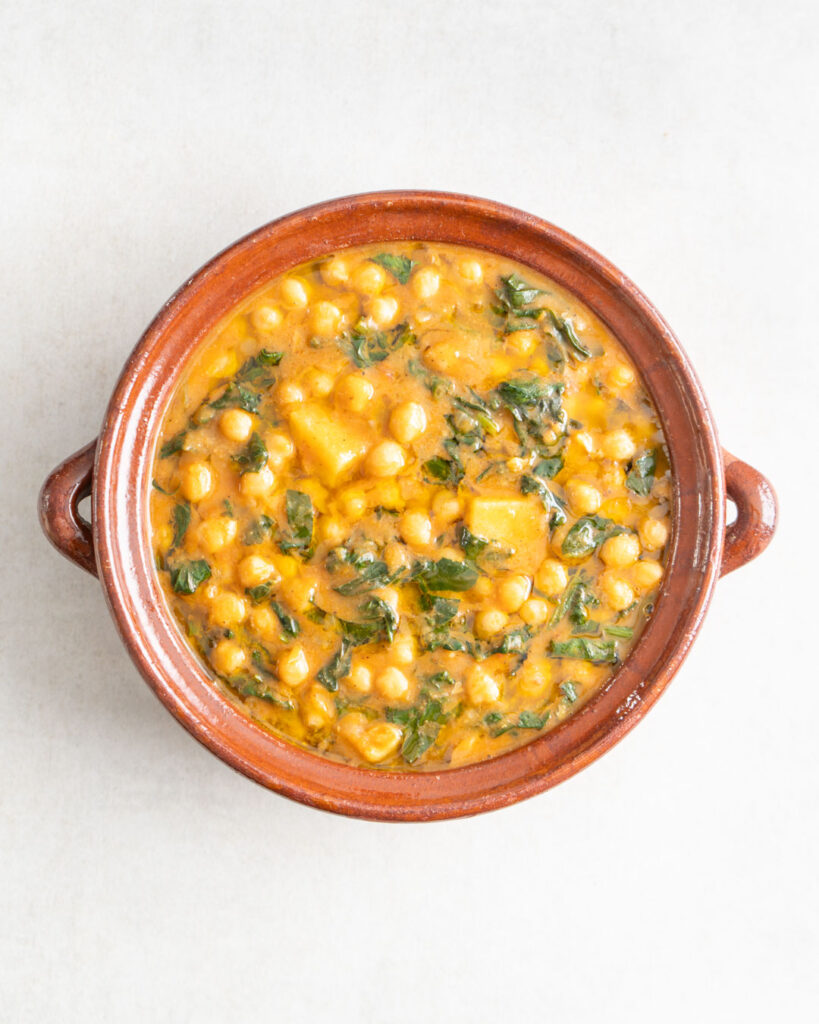





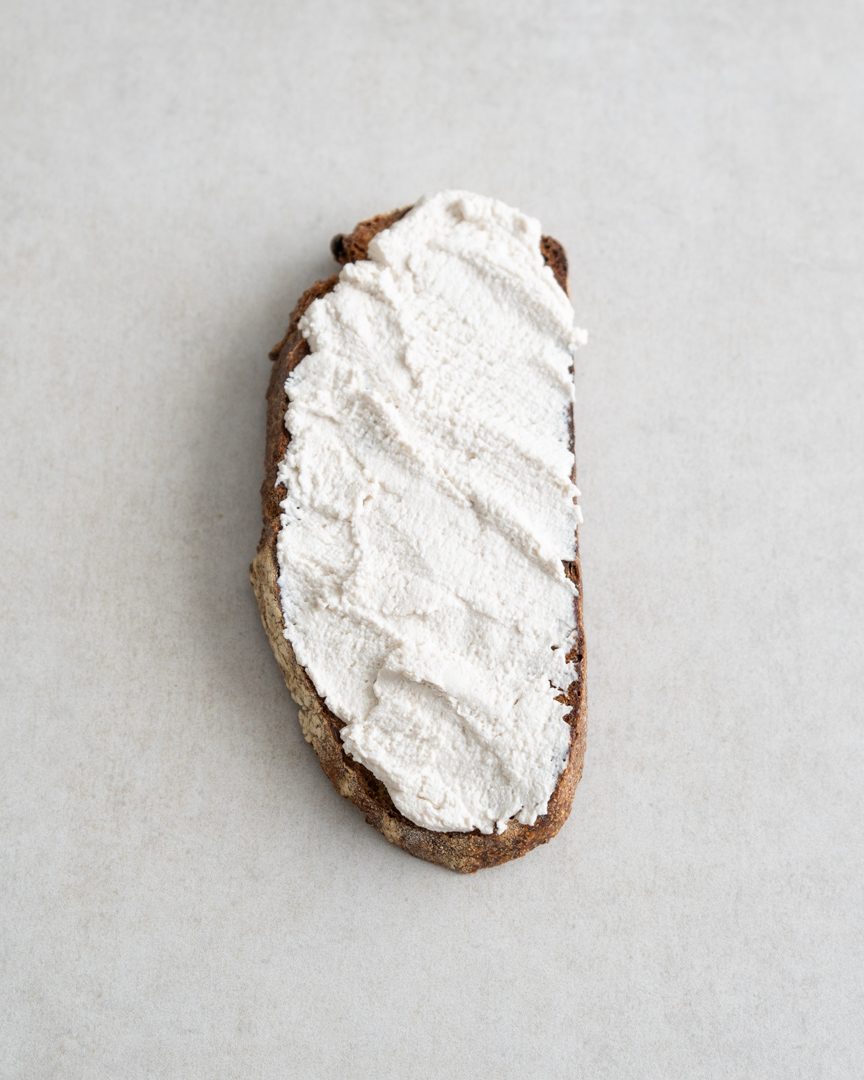
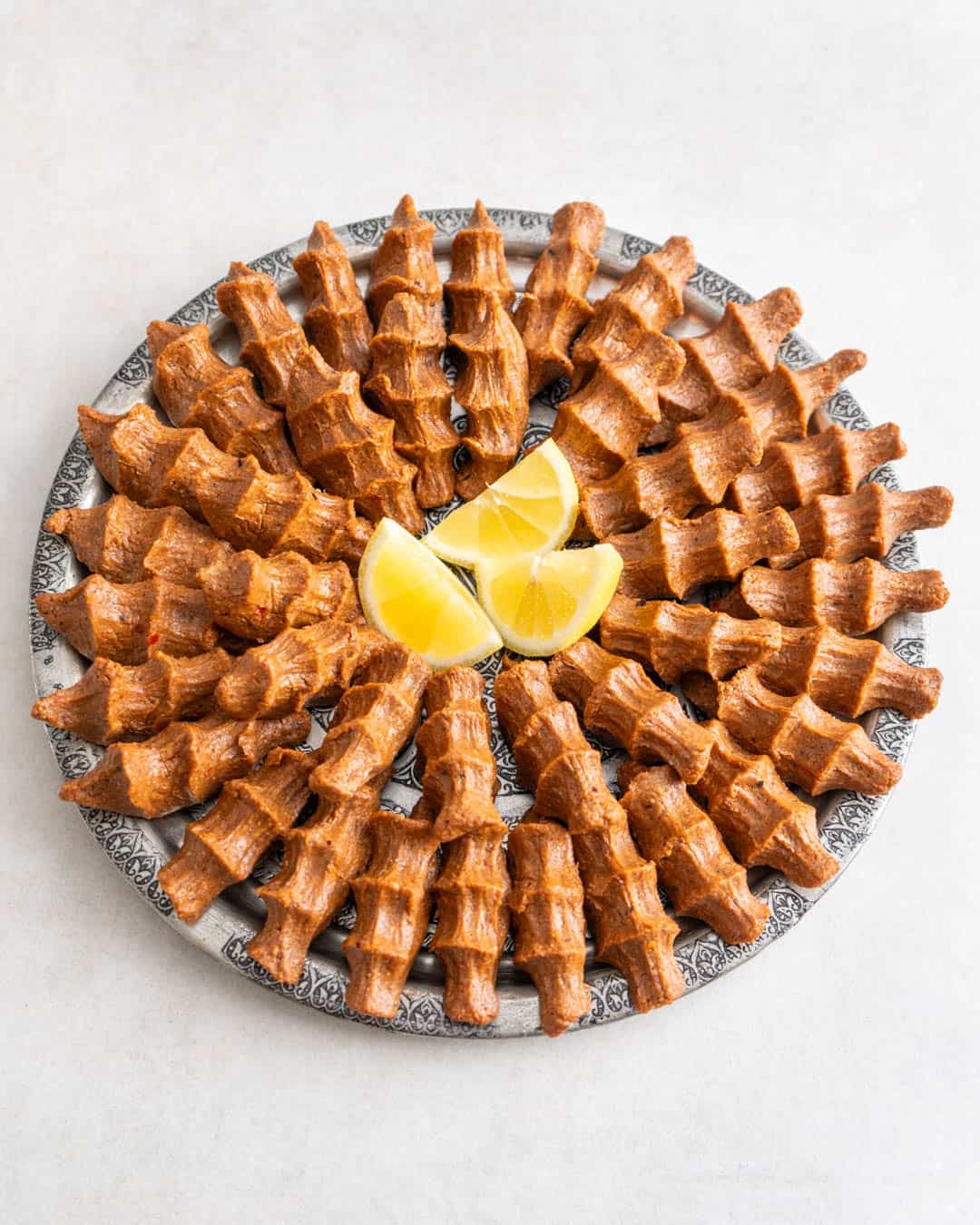


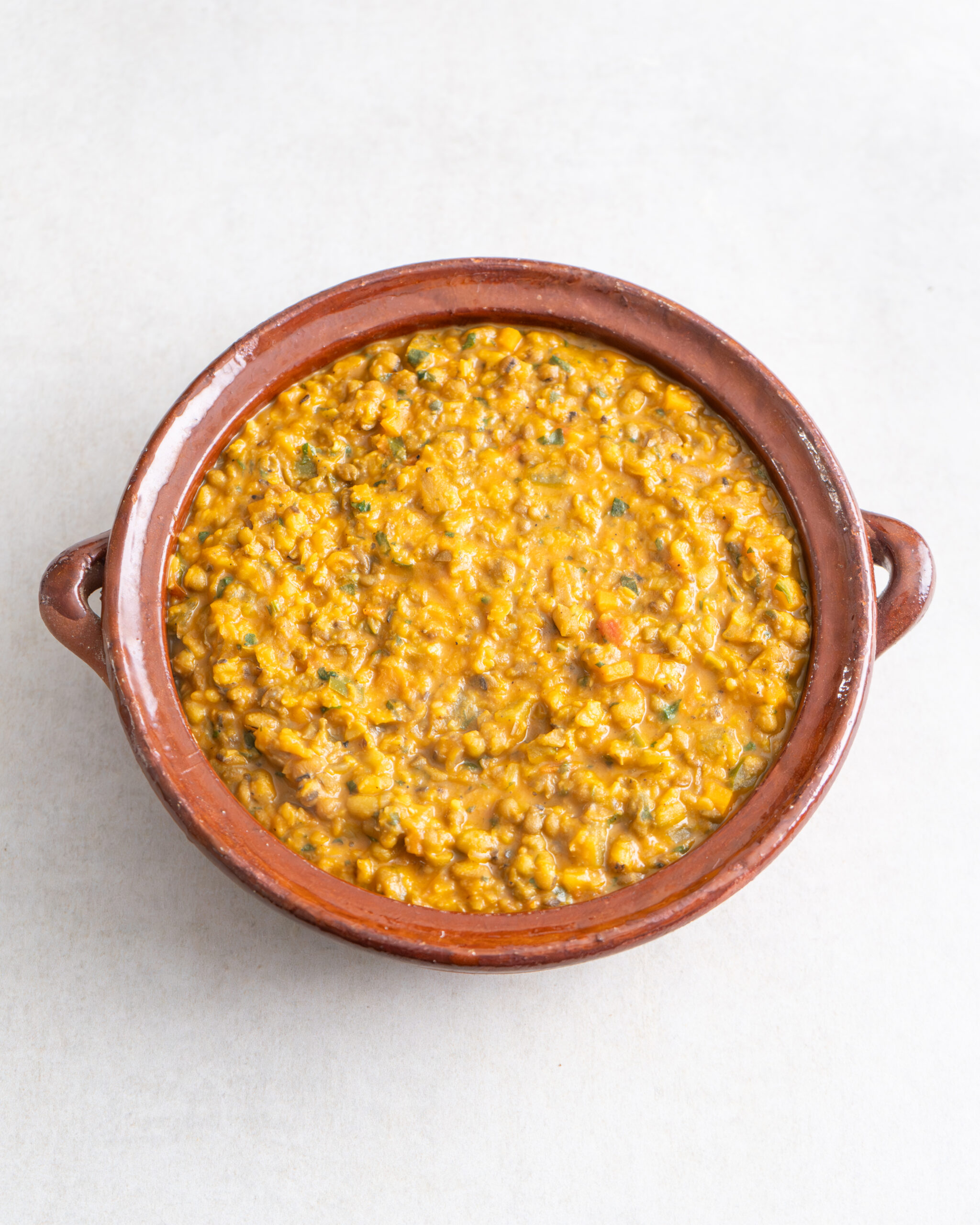




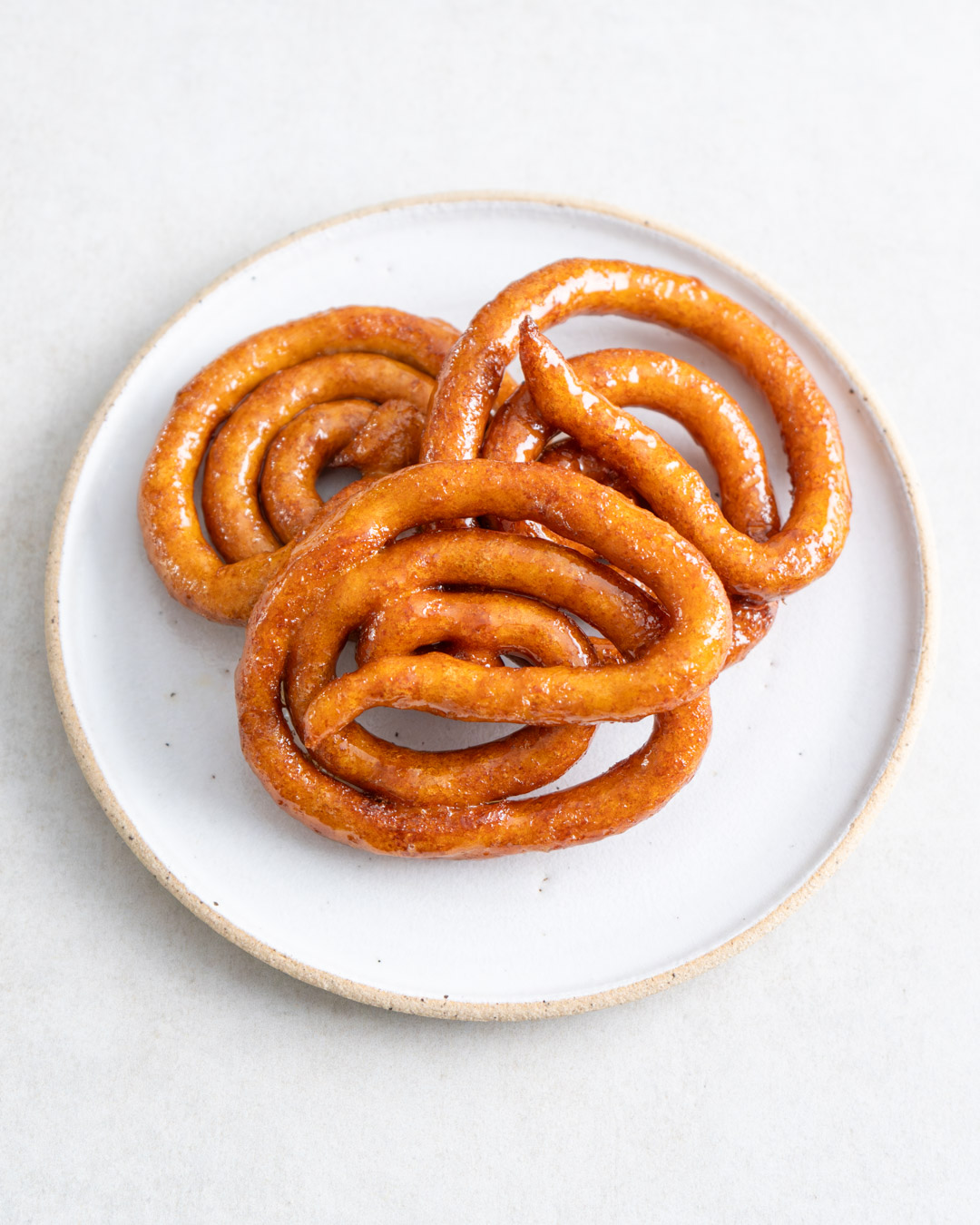

0 Comments